‘Straightforward’ Transmission Repair Gets Complicated
The unit was filled with fluid and taken for a test drive. Upon return, the technician said the transmission was slipping and bucking between shifts. The first thing I did was to look for a check engine light, which was not on (yet). So I went for a test drive. The 1-2 shift was all right, but during the 2-3 shift, engine speed started fluctuating and the check engine light came on. We checked for codes again and found one for an intermittent crank-position circuit. I already had my suspicions as to the problem, but now it was time to prove it with the least possible fuss.
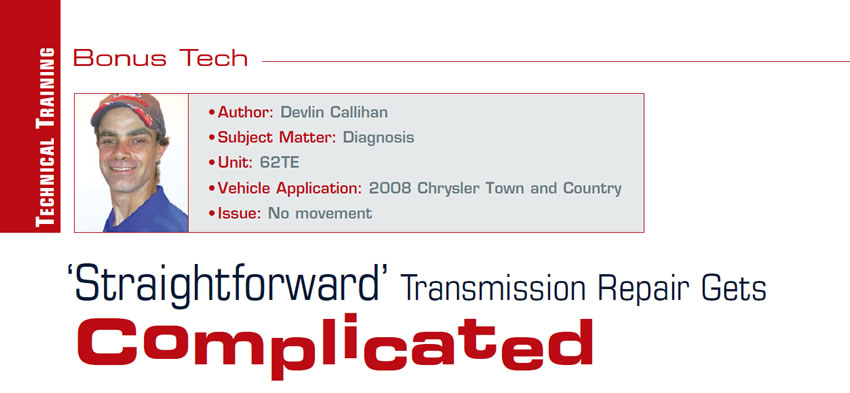
Continuity Conundrum
We spend a great deal of time helping installers with electronic-circuit codes for shift solenoids, PC-solenoid codes, input and output speed sensors, and pressure switches. Nearly all vehicles have issues with circuit codes. The focus of this article will be on Chrysler transmissions, as they seem to have more of these types of concerns than other vehicles.
Two- and three-pin harness connectors have been used for quite some time, and they have always been a primary source of circuit problems. The issues with them seem to be getting more prevalent since the vehicles that use them are aging. Loose pin fit and corrosion are the primary causes found with them, and cleaning with a heavy base (baking soda, for example) and a mild steel brush will usually dissolve the corrosion.
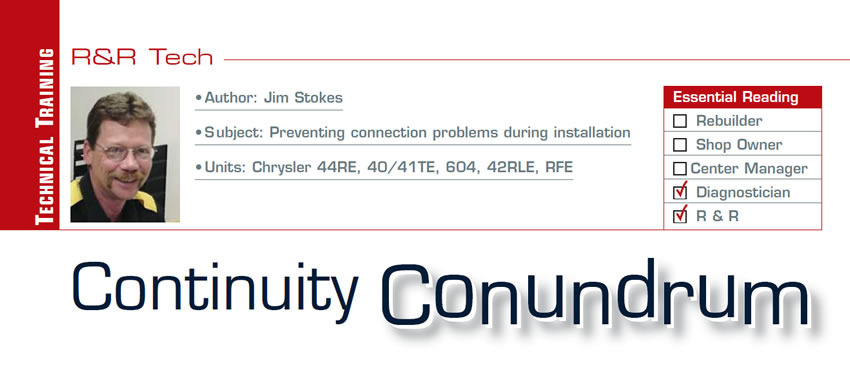
Some Days You’re the Windshield and Some Days You’re the Bug
The first was at Luis Zabala’s shop, where it’s not uncommon to have a Mitsubishi Galant with an F4A51 transmission come into the shop sporting codes for the input- and output-speed sensors and the transmission range sensor (Figure 1). Of course, the vehicle is in failsafe with these codes.
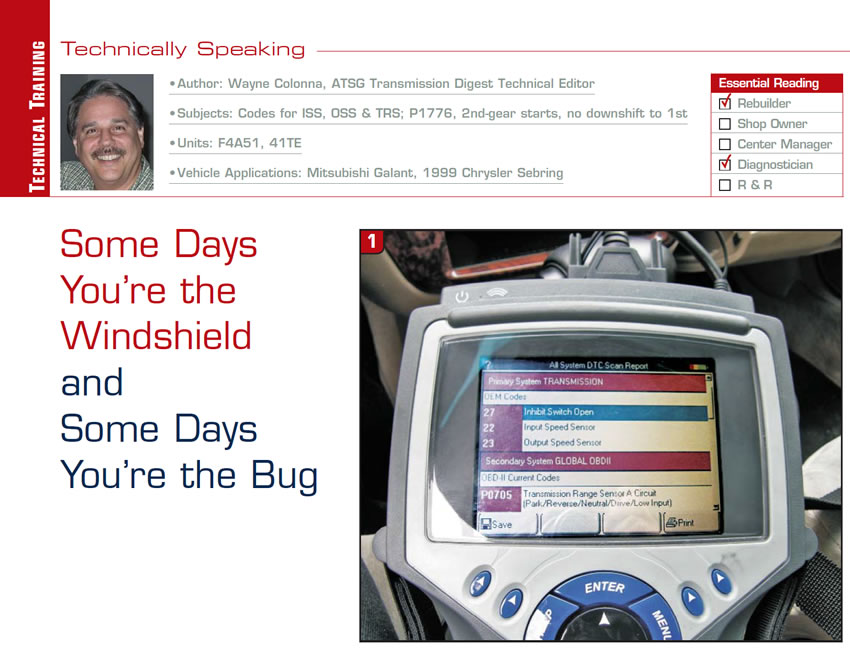
Low/Reverse-Solenoid Circuit Fault Code P0750 (41)
Without question, aside from P1776 (47), one of the most-common trouble codes plaguing Dodge/Chrysler vehicles is P0750 (or 41), “Low/Reverse Solenoid Circuit error,” in 41TE-type transmissions (see Shift Pointers, October 2008). This is purely an electrical code and typically points to the solenoid, the wiring (which includes the connectors) from the solenoid body to the TCM, or the TCM itself. In so many instances on our technical hotline the cause has been a defective TCM. What becomes very frustrating is out-of-the-box remanufactured TCMs coughing up the same code as soon as they are installed; makes you think you missed something in your previous diagnosis.
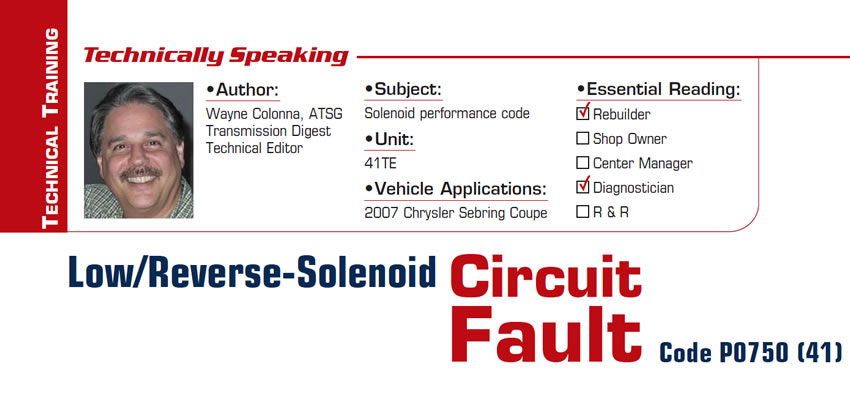
Tips for Aligning Torque-Converter-Clutch Linings into Covers
Torque-converter manufacturers have their own arguable reasons for the location of the clutch lining. For many years, torque-converter lockup-clutch linings were bonded onto the converter-clutch and/or converter-damper assemblies. In recent years we have seen the clutch linings bonded into the front covers. Rebuilders are now faced with the choice of bonding the replacement friction material to the cover like the OE or to the piston as in the earlier-model converters.
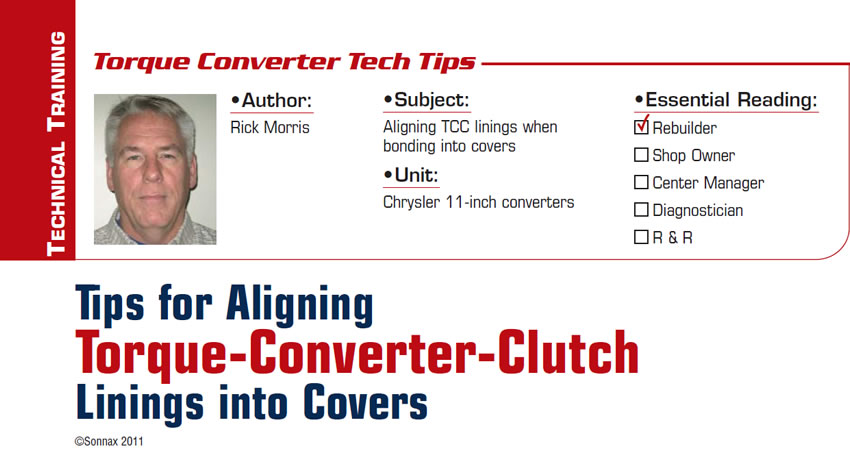
Chrysler Transmission-Range Sensor
The transmission range sensor (TRS) has three primary functions:
1. Provide a Park/Neutral start signal to the engine controller and the starter relay.
2. Turn the backup lamps on when the transmission is in Reverse and the engine (ignition) is on.
3. Provide a transmission-range signal to the instrument cluster.
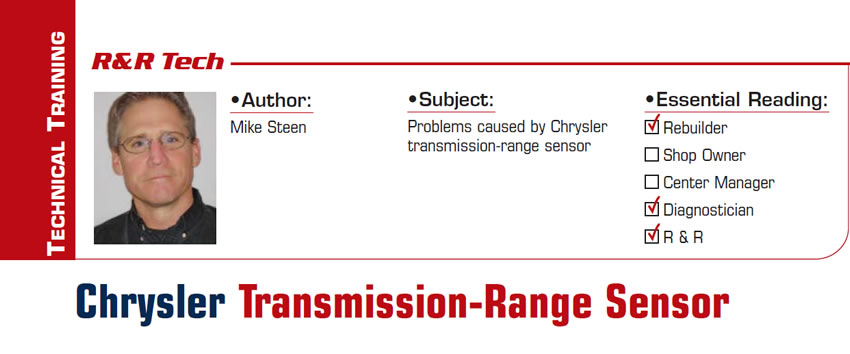
42RLE: 1st-Gear Shift Shuttle in Drive
This article, yet another pointing out cross-connect scenarios, has to do with the 42RLE input-shaft and output-shaft speed sensors.
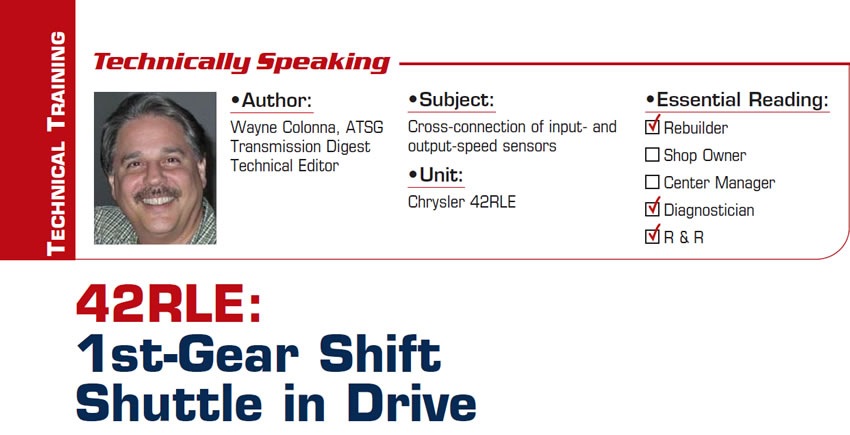
45/545RFE Pump Mystery Solved
This article refers specifically to Dodge trucks equipped with 45/545RFE transmissions. Because Dan’s shop works on many of these units, which are known to have pump issues, he stocks new pumps on the shelf. When Dan called he explained to me that when he disassembled one of these brand-new pumps he noticed that the screws that hold the pump spacer plate to the pump body were missing. He wanted to know whether this could be some kind of assembly-line error and whether he should exchange the pumps for new ones.
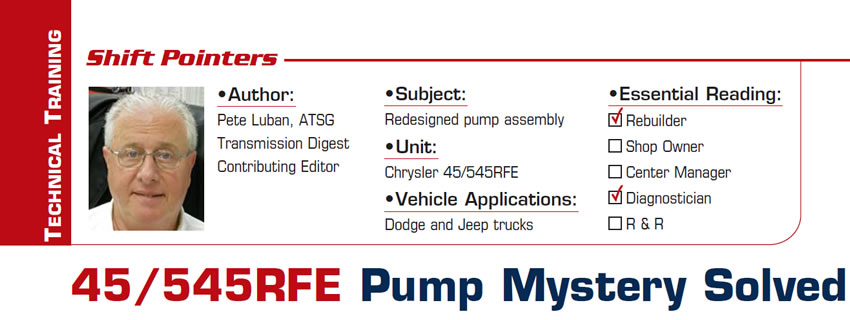
62TE Observations
In this article I thought I would share with you several of these observations that I covered in this Showpower presentation on the 62TE.
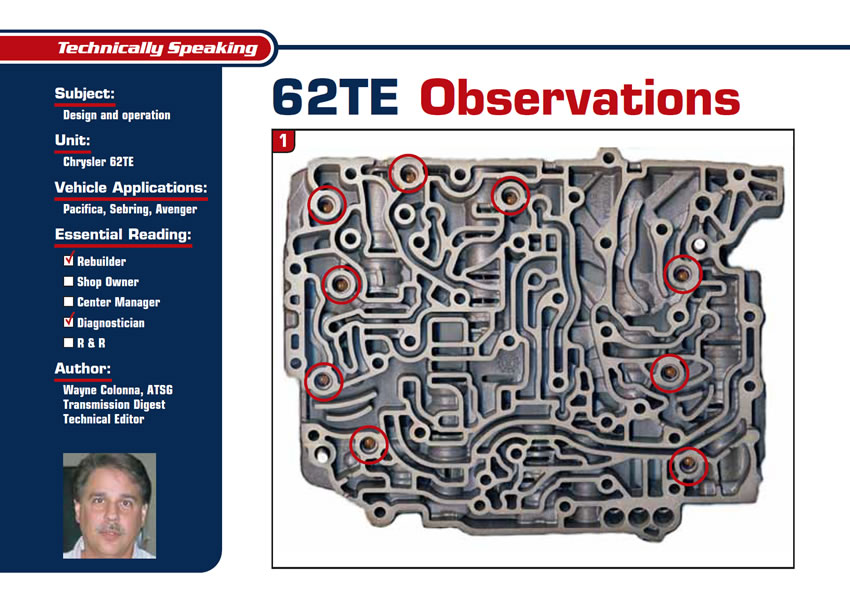
Operation Multi-Select
The shift strategy of Chrysler’s 45RFE and 545RFE transmission is clever and unique. The computer controls a total of seven solenoids in the transmission to perform all shift-feel, shift-timing, converter-clutch-apply and failsafe strategies.
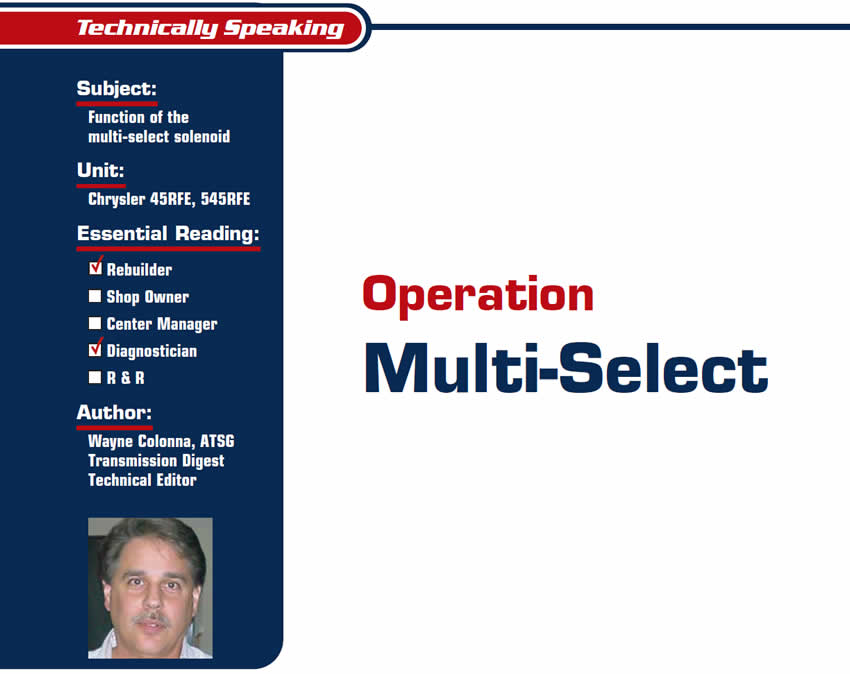
Changing Converter Designs Change Your Approach
The 10-inch front-wheel-drive Chrysler converter used in the 604 and 606 (41TE & 42LE) transmissions has undergone some changes in recent years. From the outside you can see that the surface of the impeller, smooth on the earlier models, now has dimples (see Figure 1).

740/1740 Codes and Chrysler Converter Flow
740/1740 codes tell you there is excessive slip at the TCC clutch. The engine and transmission output speeds are constantly being monitored. You can compare the difference in the two speed rates to determine transmission slip. If the RPM parameters for a slip in a given gear are met and TCC apply has not been commanded, you will see a gear-ratio code. But, if the RPM parameters for a slip in a given gear are met and TCC apply has been commanded, you will see a (TCC slip) 740 code.

